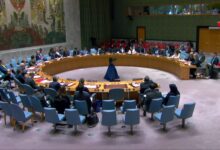Dollar Expenditures of Automakers | Online Economy

This figure, of course, with the addition of private automakers to 2 billion and 400 million euros. Five interior design desks have been set up, but the resulting savings have been only € 213 million.
While the import of cars is still banned on the pretext of lack of foreign exchange resources, the latest statistics show that the country’s automobile industry is not undervalued, despite the claims of carmakers that localization is over 90%. According to a report published by the Association of Homogeneous Parts Manufacturing Industries, the average value of each of the products of Iran Khodro and Saipa is between 1505 and 1715 Euros. Accordingly, each product produced by Saipa is valued at an average of 1505 Euros, and Iran-Automobiles also spend an average of 1715 Euros to produce a product.
If we assume that the average valuation of domestic cars is around 1600 Euros, considering the circulation of about one million units per year, only Iran Khodro and Saipa consume 1 billion and 600 million Euros per year. This figure is calculated without taking into account the products of the private sector, and if their valuation is taken into account, the amount of currency that leaves the country for car production will be higher. Private automakers have very low internalization and over 80% of the parts they need are imported.
Although the properties have a much lower circulation compared to Iran-Khodro and Saipa, however, their multiplier value makes the amount of foreign currency exported from the country in the field of automobiles, a figure higher than one billion and 600 million euros for Iran-Khodro and Saipa. If we assume that the average valuation of cars produced by the private sector is around 8,000 Euros, for example, and that 100,000 cars are produced in this sector annually, the valuation resulting from the production of private sector products will reach 800 million Euros. With this account, the total value of the country’s automobile industry, including 1 billion and 600 million euros, Iran, Khodro and Saipa, will reach 2 billion and 400 million euros.
Therefore, the country’s car industry, despite the statements of officials about domesticization, is in any case a valuable industry and has an undeniable dependence on foreign raw materials and parts. At the same time, importing cars with reasonable circulation requires much less currency, and this way, while reducing the pressure on carmakers to regulate the market, it can also create a little competition.
If we consider the average price of an imported car as 20,000 euros, with the annual import of, say, 50,000 units, the total currency used to import this number of cars will be one billion euros, and compared to the valuation of 2 billion and 400 million euros, the currency used for imports , Is about 40%. In other words, the import of 50,000 units per year is 60% less valuable than the one-year production of automakers.
Meanwhile, according to the parliament’s decision to liberalize car imports in exchange for exports, there is no plan to leave the country at all. According to this resolution, which was opposed by the Supreme Supervisory Board for the proper implementation of the system’s general policies (due to contradictions with the policies of the resistance economy and the protection of Iranian labor and capital), no currency will be exported for car imports.
In other words, the currency needed for limited car imports is provided through the export of cars and Iranian parts or capital abroad. Therefore, in addition to the fact that the total currency required for the import of about 50,000 vehicles per year will reach one billion euros, this currency is not going to leave the country, which means that there will be no specific currency pressure. However, at present, the members of the High Supervisory Board are not satisfied with the proper implementation of the general policies of the system, and the import of cars is not feasible despite the approval of the parliament and the positive position of the Guardian Council. Of course, the parliaments are trying to obtain their favorable opinion on import liberalization through consultation with the High Supervisory Board. It seems that in the end, it is the Expediency Council that will clarify the task of the car import decision, and we will have to wait and see when this will happen.
However, if there is an exchange rate, not only will the import of cars require much less currency than the production, but the currency will not leave the country at all. On the other hand, just as domestic production, despite valuation, has positive consequences such as employment and has prevented large amounts of foreign exchange from leaving the country, so liberalization of imports, despite valuation, is not without positive developments. Creating competition, albeit small, reviving the thousands of jobs lost during the import ban and, of course, breaking prices, are important events that will take place in exchange for car imports.
Valuation after internalization tables
The valuation of 1 billion and 600 million Euros of Iran, Khodro and Saipa, however, while the Ministry of Industry, Mines and Trade, during the sanctions period, tried to reduce the dependence of the automobile industry on the outside by launching an internalization movement. The ministry encouraged automakers and auto parts makers to build domestically by holding localization tables, thereby reducing the impact of sanctions on production and lowering valuation during the country’s currency crisis. According to statistics published by the Association of Homogeneous Parts Manufacturing Industries, a total of five manufacturing tables have been held inside auto parts to date, which has led to a reduction in value of 213 million euros. A total of 148 manufacturers have participated in these tables and a contract of 6,717 billion tomans has been concluded with them.
The Association of Homogeneous Parts Manufacturing Industries estimates that if all five interior design projects succeed, the annual devaluation figure will reach € 400 million. According to the published report, however, in the first table of internalization, a contract of 740 billion Tomans was concluded with 32 manufacturers for the construction of 35 pieces, and the result was a reduction in value of 85 million Euros. In the second table of interior construction, a contract of 1,125 billion Tomans was concluded with 36 manufacturers for the construction of 42 pieces, and the result was a reduction in value of 91,000 million Euros. In the third table of interior construction, a contract of 1333 billion Tomans has been concluded with 21 manufacturers for the construction of 22 pieces, and the result has been a reduction in value of 99 million Euros.
In the fourth interior construction table, a contract of 1,259 billion Tomans was concluded with 36 manufacturers for the construction of 55 pieces, and the result was a reduction in value of 666 million Euros. Finally, in the fifth table of internalization, a contract of two thousand and 257 billion Tomans has been concluded with 23 manufacturers for the construction of 33 pieces, which is to be followed by a reduction of 56.5 million Euros.
So even if all these tables are completed, only 400 million euros will be deducted from the value of the automotive industry. Taking into account the valuation of 1 billion and 600 million Euros of Iran, Khodro and Saipa, the completion of the internalization tables will reduce the valuation of these two companies by 25%. Since the private sector does not seem to have a special role to play in this matter, considering the possible valuation of € 2 billion and € 400 million, the total valuation figure in the country’s car industry will reach € 2 billion.
Some experts and even activists in the automotive industry believe that if sanctions are lifted and ways to communicate with foreign countries are opened and the country’s currency situation improves, the internalization project will be very slow and the amount of foreign currency leaving the country will increase. If we assume that the average valuation of domestic cars in the post-embargo period, for example, will reach 1,500 euros per product and the circulation will increase to 1.5 million units, then something like 2.2 billion and 250 million euros will be exported only from Iran, Khodro and Saipa. The privatization of cars in the private sector and the fact that they, too, will have a significant increase in circulation, will significantly increase the value of the automobile industry in the post-embargo period, unless internalization continues. Of course, no matter how much domestic construction takes place, there will still be a permanent currency dependence on certain parts, especially in the electronics sector, because there is no technical capability and, of course, no economic justification for domestic manufacturing.
The three bottlenecks of the automotive industry
According to a report by the Association of Homogeneous Parts Manufacturing Industries, the average exchange rate for an Iran-Khodro product is 1,715 euros, and in Saipa, the average foreign exchange consumption is 1,505 euros. The question now is in what sectors this amount of currency is used for imports.
According to the report, the valuation of domestic cars has three bottlenecks, which include “non-electrical needs of automakers and parts manufacturers”, “electrical components” and “raw materials”. In Iran Khodro, the valuation due to the first bottleneck (non-electrical needs of automakers and parts manufacturers) has a share of 33%, equivalent to 560 Euros per vehicle. Meanwhile, in Saipa, the share of this bottleneck is estimated at 34% and equivalent to 509 Euros. The second bottleneck (electrical components) also has a 30% share in Iran-Khodro, which is calculated at 520 Euros.
In Saipa, although the share of this bottleneck is the same 30%, but its amount is estimated at 446 euros. Finally, the third bottleneck (raw materials) has the largest share in both Irankhodro and Saipa, although the amounts are different. Iran Automobiles spend an average of 635 euros in foreign exchange to supply raw materials for each of their products, but the share of valuable raw materials in each Saipa product is 550 euros.
.

